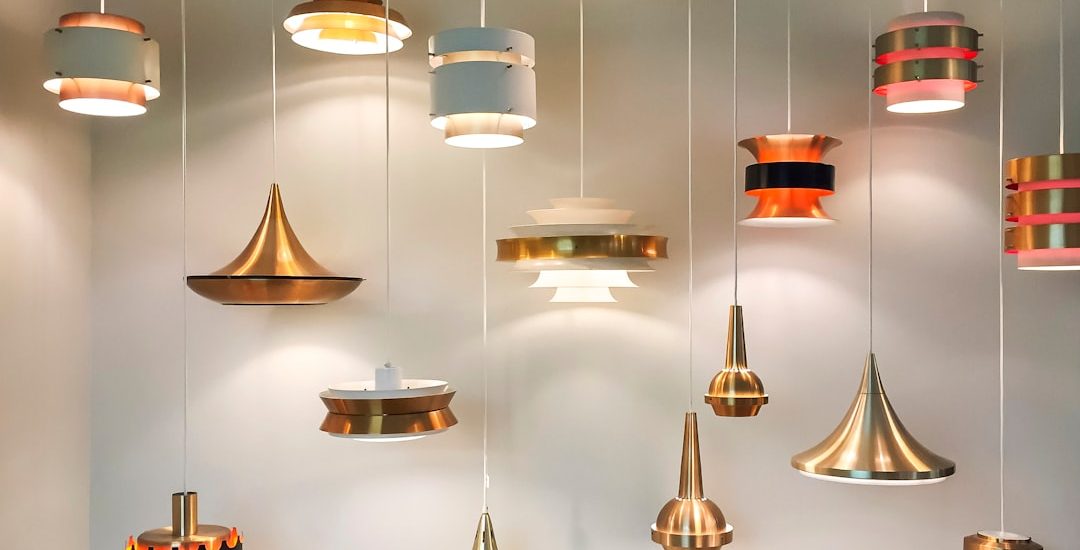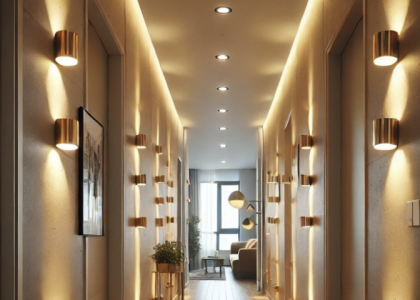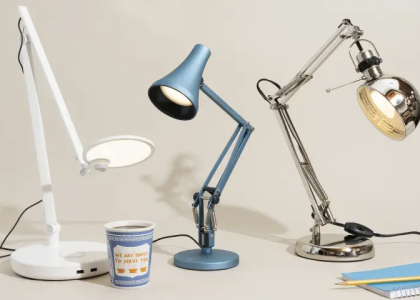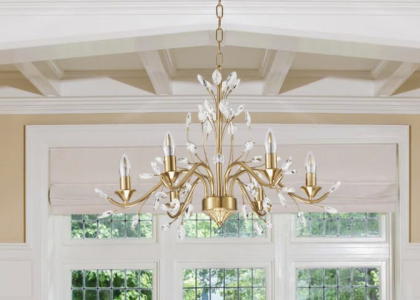Lighting Hozo plays a crucial role in creating a welcoming and comfortable atmosphere in a living room. It has the power to transform a space, making it feel bright and airy or warm and cozy. The right lighting can enhance the overall design of a room and highlight its best features. Whether you’re entertaining guests, watching a movie, or simply relaxing with a book, having the right lighting can make all the difference.
Lighting not only serves a functional purpose but also contributes to the overall aesthetic of a living room. It can be used to highlight artwork or architectural features, create focal points, and set the mood for different activities. By carefully selecting and arranging different types of lighting, you can create a space that is both functional and visually appealing.
Types of Lighting to Consider
There are three main types of lighting that should be considered when designing a living room: ambient, task, and accent lighting.
1. Ambient Lighting: This is the general lighting that provides overall illumination to a room. It is usually achieved through ceiling-mounted fixtures such as chandeliers, pendant lights, or recessed lights. Ambient lighting should be bright enough to provide adequate visibility in the room but not too harsh or glaring.
2. Task Lighting: Task lighting is focused lighting that is used for specific activities such as reading, working on a laptop, or playing board games. It should be bright enough to prevent eye strain but not too harsh. Examples of task lighting include table lamps, floor lamps, and desk lamps.
3. Accent Lighting: Accent lighting is used to highlight specific objects or areas in a room such as artwork, architectural features, or decorative elements. It adds depth and visual interest to a space. Examples of accent lighting include wall sconces, picture lights, and track lighting.
By combining these three types of lighting, you can create a well-lit living room that is both functional and visually appealing.
Choosing the Right Light Fixtures
When choosing light fixtures for your living room, there are several factors to consider. First, consider the size of the room and the height of the ceiling. A large room with high ceilings may require larger fixtures to provide adequate lighting, while a small room with low ceilings may benefit from smaller, more compact fixtures.
Next, consider the style of your living room. The light fixtures should complement the overall design aesthetic and blend seamlessly with the other elements in the room. For example, if you have a modern living room, you may opt for sleek and minimalist light fixtures, while a traditional living room may benefit from more ornate and decorative fixtures.
Placement is also important when choosing light fixtures. Consider the different areas of your living room and how you will be using them. For example, if you have a seating area where you like to read, you may want to place a floor lamp or table lamp nearby for task lighting. If you have artwork or architectural features that you want to highlight, consider using accent lighting to draw attention to them.
Some examples of light fixtures that work well in a living room include chandeliers, pendant lights, wall sconces, floor lamps, table lamps, and recessed lights. These fixtures come in a variety of styles and designs to suit different tastes and preferences.
The Importance of Natural Light
In addition to artificial lighting, natural light is also an important consideration when designing a living room. Natural light has numerous benefits, including improving mood and productivity, reducing energy consumption, and providing a connection to the outdoors.
One of the key benefits of natural light is its ability to make a space feel larger and more open. It can create a sense of depth and dimension in a room that artificial lighting cannot replicate. Natural light also has a warm and inviting quality that can enhance the overall atmosphere of a living room.
To maximize natural light in a living room, consider the placement and size of windows. Opt for larger windows or multiple windows if possible to allow more light to enter the space. Avoid heavy window treatments that block out natural light and opt for sheer curtains or blinds that can be easily opened and closed.
Another way to maximize natural light is by using reflective surfaces such as mirrors or light-colored furniture and accessories. These surfaces can help bounce light around the room and make it feel brighter and more spacious.
Using Dimmers to Control Lighting
Dimmers are a great tool for controlling the intensity of light in a living room. They allow you to adjust the brightness of the lighting to suit different activities or moods. For example, you can dim the lights for a cozy movie night or increase the brightness for a game night with friends.
When choosing dimmer switches, consider the type of lighting you have in your living room. Not all light fixtures are compatible with dimmers, so make sure to check the specifications before purchasing. LED lights, for example, require specific dimmer switches designed for LED lighting.
Installing dimmer switches is relatively easy and can be done by a homeowner with basic electrical knowledge. However, if you’re not comfortable with electrical work, it’s best to hire a professional electrician to ensure proper installation and safety.
Lighting Ideas for Small Living Rooms

Lighting a small living room can be challenging due to limited space. However, with some careful planning and creativity, you can make the most of the available space and create a well-lit and functional room.
One tip for lighting a small living room is to use wall-mounted or ceiling-mounted fixtures to save floor space. This could include wall sconces, track lighting, or recessed lights. These fixtures provide ample lighting without taking up valuable floor space.
Another tip is to use multi-functional furniture that incorporates lighting. For example, there are coffee tables or side tables with built-in lamps or shelves with integrated lighting. These pieces of furniture not only provide lighting but also serve a practical purpose by providing storage or additional surface area.
Additionally, consider using mirrors strategically to reflect light and make the room feel larger. Placing a mirror opposite a window can help bounce natural light around the room and create the illusion of more space.
Creating a Cozy Atmosphere
In addition to providing adequate lighting, it’s important to create a cozy atmosphere in a living room. Warm lighting can help achieve this by creating a soft and inviting ambiance.
One way to create warm lighting is by using warm-colored light bulbs. Opt for bulbs with a color temperature of around 2700K to 3000K, which emit a warm, yellowish light similar to incandescent bulbs. Avoid bulbs with higher color temperatures, as they tend to emit cooler, bluish light.
Another way to create a cozy atmosphere is by using soft and diffused lighting. This can be achieved through the use of lampshades or frosted glass fixtures that help scatter the light and reduce harsh shadows. Table lamps, floor lamps, and wall sconces with fabric shades are great options for creating soft and diffused lighting.
Candles are another great way to create a cozy atmosphere in a living room. They provide a warm and flickering light that adds instant ambiance to any space. However, it’s important to use caution when using candles and never leave them unattended.
Adding a Statement Piece
A statement light fixture can add visual interest and become a focal point in a living room. It can serve as a piece of art or sculpture that enhances the overall design aesthetic of the space.
When choosing a statement light fixture, consider the style and scale of your living room. A large chandelier with intricate details and crystals may work well in a formal or traditional living room, while a modern and minimalist living room may benefit from a sleek and sculptural pendant light.
Some examples of statement light fixtures include oversized chandeliers, unique pendant lights, or artistic floor lamps. These fixtures can add drama and personality to a living room and become a conversation starter.
Energy-Efficient Lighting Options
Energy-efficient lighting not only helps reduce energy consumption but also saves money on utility bills. There are several energy-efficient light fixtures that work well in a living room.
LED lights are one of the most energy-efficient options available. They use significantly less energy than traditional incandescent bulbs and have a much longer lifespan. LED lights are available in a variety of styles and designs, making them suitable for any living room.
Another energy-efficient option is compact fluorescent lamps (CFLs). These bulbs use about 75% less energy than incandescent bulbs and last up to 10 times longer. CFLs are available in different color temperatures and can be used in various types of light fixtures.
Tips for Layering Lighting
Layering lighting is an important technique for creating a balanced and functional living room. It involves using different types of lighting at different levels to provide both ambient and task lighting.
Start by considering the overall lighting needs of the room. Determine the areas that require general illumination and those that require focused lighting for specific activities. Then, choose the appropriate fixtures for each area.
For example, you may use recessed lights or a chandelier for ambient lighting, table lamps or floor lamps for task lighting, and wall sconces or picture lights for accent lighting. By combining these different types of lighting, you can create a well-lit living room that meets all your needs.
When layering lighting, it’s important to consider the placement and direction of the light sources. Avoid placing fixtures directly above seating areas, as this can create harsh shadows. Instead, position them to the side or behind to create a more flattering and even light.
In conclusion, lighting plays a crucial role in creating a welcoming and comfortable living room. By considering the different types of lighting, choosing the right light fixtures, maximizing natural light, using dimmers, and incorporating various lighting techniques, you can create a well-lit and visually appealing space. Experiment with different types of lighting and don’t be afraid to get creative. With the right lighting, you can transform your living room into a cozy and inviting sanctuary.











